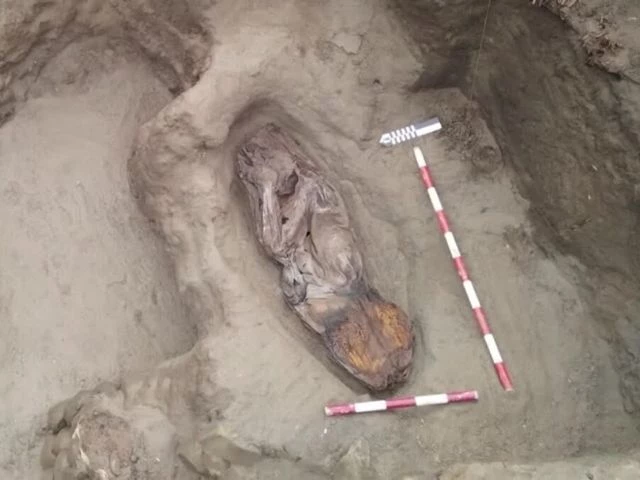Archaeologists in Peru have uncovered the 5,000-year-old remains of a noblewoman in the ancient Caral civilization, shedding new light on the significant role of women in one of the Americas’ oldest cultures.
The discovery was made in the Aspero area, a sacred site within the Caral city, located about 180 kilometers north of Lima.
The remains, which date back to around 3,000 BC, were found to be exceptionally well-preserved, with traces of skin, hair, and nails still intact.
Wrapped in a shroud of fabric and adorned with a mantle of colorful macaw feathers, the woman is believed to have belonged to the upper class.
Her tomb also contained a toucan’s beak, a stone bowl, and a straw basket, further emphasizing her elite status.
Archaeologist David Palomino described the find as significant, noting that the woman’s burial suggests that women held a vital, high-ranking position in Caral society, challenging the traditional view that leadership roles were predominantly male.
The Caral civilization, which flourished around the same time as ancient Egypt and Mesopotamia, is considered the oldest in the Americas and was developed in relative isolation.
The site of Caral, a UNESCO World Heritage site since 2009, continues to provide valuable insights into the ancient civilizations of the Americas.







